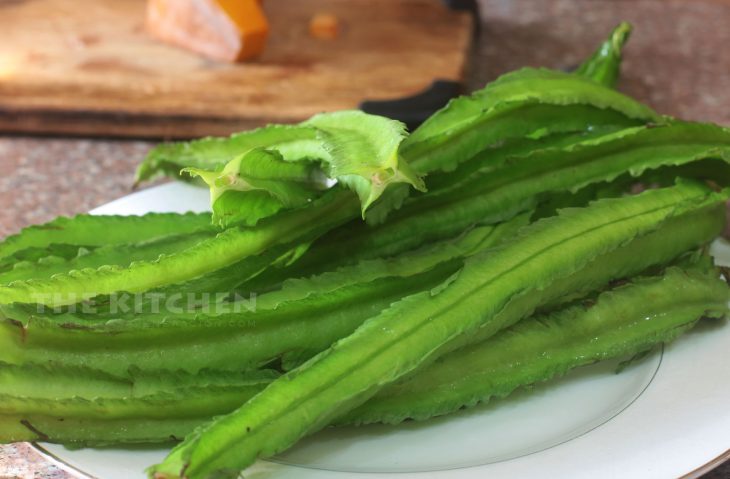Winged bean goes by so many English names, including asparagus pea and winged pea. It is a legume, definitely, and whether it is a bean or a pea, strictly speaking, is really secondary to the home cook. For home cooking, what is essential to know is what the vegetable looks like, how it is prepared and what it tastes like.

Winged beans grow in vines, and all parts of the plant, including leaves and flowers, are edible. This post, however, is about the pod and how it is used in cooking.
The winged bean is about six inches long; more mature ones are around two inches longer. The pod has four “wings” (hence, the name) with feathery edges that run through its entire length. The seeds are found in the middle part of the pod.
Where do winged beans grow?
In the tropics. Winged beans require a hot climate with plenty of rainfall to thrive. It grows abundantly in Southeast Asia, including the Philippines.
How do you eat winged beans?
Just like any pod, the winged beans require trimming. Unlike other beans and peas, though, the sides do not need to be stringed. Just snip off the top of the winged bean then cut or slice.
Very young winged beans are sometimes eaten raw as a salad but it is more usual to cook them into vegetable dishes.
What do winged beans taste like?
The flavor is subtle, it is not fibrous (like mature green beans) and, if not overcooked, retains a pleasant light crunch. Think asparagus — the flavor and texture are comparable.